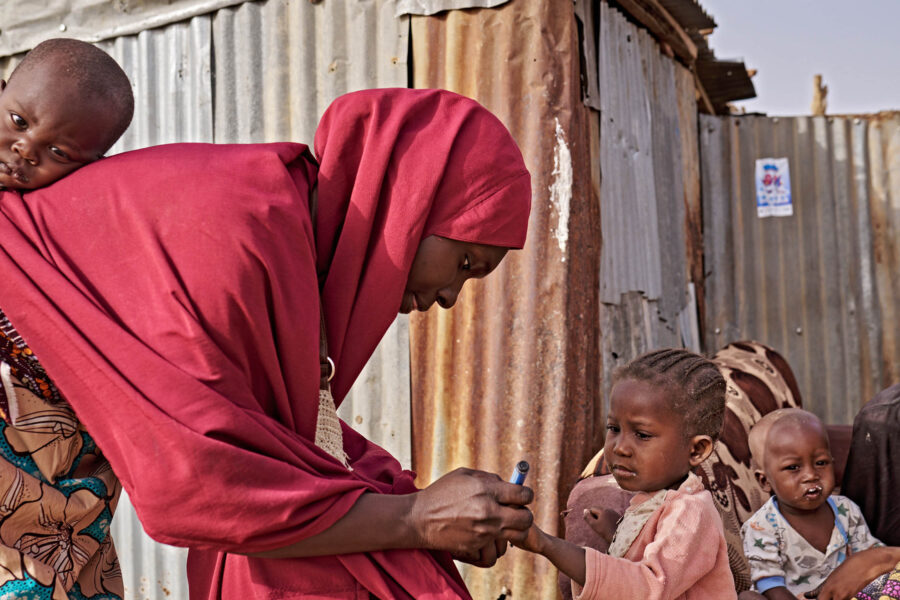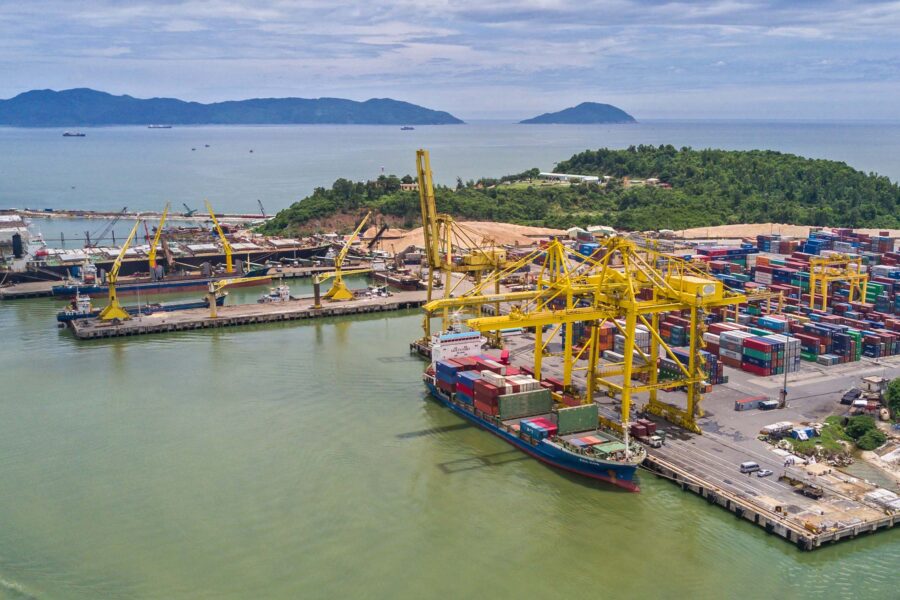Planning for an orderly exit from fossil fuels
As energy systems decarbonize, ensuring a smooth transition to renewables will be critical for the economies and workers that currently depend on fossil-fuel-based generation. How can we move quickly while leaving no one behind?
Climate — Global

In its 2018 special report, the Intergovernmental Panel on Climate Change warned that to limit the average global temperature rise to 1.5°C, the world would need to achieve net-zero carbon emissions by 2050. Many countries have pledged to take the necessary steps to curb the temperature rise to 2°C. Others have gone further and committed to action to reach the 1.5°C target set at the UN climate summit in Paris.
COP26 in November 2021 concluded with nearly 200 countries agreeing the Glasgow Climate Pact to keep 1.5°C alive and finalize the outstanding elements of the Paris Agreement. On the opening day of COP27, a year later, UN Climate Change Executive Secretary Simon Stiell called for aligning “every corner of human activity” with the 1.5°C goal, saying: “Paris gave us the agreement and Katowice and Glasgow gave us the plan. Sharm El Sheikh shifts us to implementation.”
With that 1.5°C goal now front of mind, the transition to a more sustainable, low-carbon future is accelerating. Central to this is the energy transition: the progressive replacement of carbon-based fuels with alternative energy, notably renewables and nuclear.
The International Atomic Energy Agency notes that there are over 80 types of small modular reactor (SMR) designs and concepts under development, albeit in a few countries. But these SMRs are not likely to be available at scale until the 2030s.
Renewables are therefore the most important alternative energy resources at present.
Why orderly?
An orderly exit of fossil-fuel generation is a crucial step toward creating a sustainable and decarbonized energy system. A disorderly exit, by contrast, could lead to a range of negative consequences, from mass unemployment to power blackouts.
Yet exit we must. However, various barriers exist to moving away from fossil fuels, including:
- the fact that fossil-fuel infrastructure has a remaining usable life
- the need to achieve a return on investment
- contractual commitments, such as existing power purchasing agreements
- the need to achieve cost-effective flexibility in production
- the need to achieve energy system stability and adequacy
Addressing and navigating these complex issues will require careful management. We will need to establish policies, regulations, and financial models to achieve an orderly exit. We will also need to apply a variety of new technologies, such as:
- carbon capture, usage, and storage
- hydrogen-blended natural gas, or hydrogen generation
- (in some cases) blending biomass and hydrogen-based fuels in coal-fired plants
An orderly, managed transition of fossil-fuel generation should therefore be seen as a necessary step in the overall transformation of energy. Ultimately, it will help to deliver the transformation more quickly and cost-effectively, and ensure the stability, adequacy, and resiliency of the networks until other technologies (such as energy storage, extensive demand-side management, and smart grids) have been deployed at the scale necessary to fully support a decarbonized energy system.
Moving from fossil-fuel to renewable generation will also change the pattern of the power flow. We will need to upgrade, expand, and improve the management of existing transmission and distribution infrastructure. And, to improve the efficiency and reliability of the system, we will need to deploy smart grid technologies such as intelligent electronic devices, flexible alternating current transmission system (FACTS) devices, dynamic line loading management, digitalization, and energy storage systems.
Renewable challenges
Deploying renewable energy technologies is the right and inexorable pathway to achieving the goal of zero-carbon emissions. However, simply deploying more weather-reliant technologies, mainly solar and wind, presents challenges to power system reliability and resiliency for normal operations.
One such challenge is maintaining stability if parts of the system fail. Traditional power systems – based on fossil, nuclear, and hydropower – store energy in their rotating generators, a feature called inertia. When large power plants fail, inertia causes them to continue rotating and generating power. This only happens for a few seconds but it is sufficient time for the grid to detect the failure and respond. Current grids tend to have an abundance of inertia.
However, many renewables are integrated into the grid through inverter-based resources that do not inherently provide inertia. In addition, while inverters provide new dimensions of controllability, they also increase the complexity of operating the grid. High-level penetration of inverter-based renewable energy therefore poses challenges to system operation and protection. So it’s critical that we understand and provide solutions for running stable, low-inertia power systems.
Battery energy storage systems (BESS) and hydrogen-based power systems are considered game-changers. They have huge potential to capture renewable energy whenever it’s available and use it on demand. In other words, they can transform the intermittent nature of renewable energy into dependable sources. Through proper control, storage systems can provide very fast voltage or frequency support and offer synthetic inertia to reduce rates of change of frequency (RoCoF).
Adding the required amounts of storage, however, will require regulatory support and suitable grid connections, and will take time. It will be very expensive to achieve full network storage support in the near to mid-term future. In specific cases, it may be feasible to convert existing fossil-fuel generation into carnot batteries (that hold electricity through thermal storage) or into synchronous condensers.
The market share of standalone and hybrid systems (combined renewables, hydrogen, and battery) continues to rise. These systems will play an increasingly important role in the energy market, helping to reduce greenhouse gas (GHG) emissions, providing dependable, zero-carbon energy, and improving the reliability and resiliency of the system (by boosting virtual inertia and reducing RoCoF).
Ethics of innovation and implementation
Even when technology is backed by good intention, history shows us that it can have unintended consequences. Mark Zuckerberg didn’t start Facebook anticipating that third-party abuse and political interference would run rampant on the platform.
It’s therefore important to establish guiding principles to create socially responsible innovation and implementation. The energy transformation must ensure:
- justice and equity for workers and energy users
- sustainable development
- science-based decision-making
- collaboration and partnership
- transparency and accountability
Providing access to renewable energy to all communities is obviously the ethical, sustainable, and environmentally responsible approach. Yet we should also keep in mind several sector-specific factors if we want to ensure as smooth a transition as possible, minimizing unintended consequences.
For example, renewable energy projects have social and economic impacts on local communities. These can include making energy less affordable for low-income households or creating redundancies in traditional sectors like coal mining. We must ensure that communities benefit from the opportunities the transition will offer, such as the creation of new jobs and the development of workforce skills needed to build and operate the low-carbon means of generation.
Other concerns include land acquisition, a serious problem that can arise in the context of renewable energy development. Multifunctional land use can be an effective strategy for developing renewable energy while minimizing land-use conflicts. And it’s also critical that the transition avoids carbon leakage (where a reduction in emissions in one country or sector leads to an increase in emissions in another).
New skills, new jobs
Traditional, carbon-based electrical generation may play a significant role in some nations’ and regions’ economies and job markets. Exiting from these industries will require dedicated efforts at reskilling workers and in local industrial development. It also offers an opportunity to create a raft of new jobs.
How the energy transition proceeds over time will determine which skills and jobs are needed through the various phases. Many of the jobs required for the energy transition, such as those in renewable energy, energy storage, and digital solutions, require specialized skills that are not currently widely available in the workforce.
Developing trained, qualified, and certified workers is critical to achieving a successful, timely, and sustainable transition. Bridging the skills gap will require targeted training programs, apprenticeships, and upskilling opportunities. At the same time, these should also foster workforce diversity, alleviate regional disparities, enable innovation, and accelerate digitalization.
Building a skilled workforce for the energy transition therefore requires significant coordination and corporation among governments, universities, training institutions, and the private sector to ensure certified development programs for the workforce will be delivered.
Conclusion
Transitioning to renewable energy generation is a multifaceted process that requires careful planning and execution. Achieving an orderly and seamless exit from fossil-fuel generation will take a coordinated and sustained effort. Establishing a holistic approach, one that creates roadmaps to meet the needs of specific nations or regions based upon local conditions, will help ensure the transition is successful. While the challenges are significant, rising to them is essential if we’re to mitigate the impact of climate change and create a sustainable energy future.





